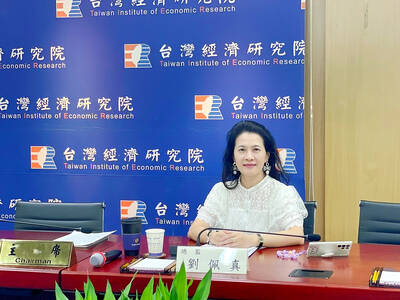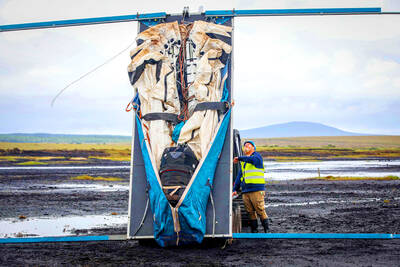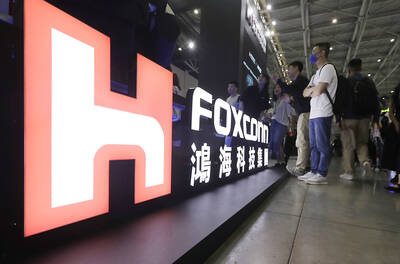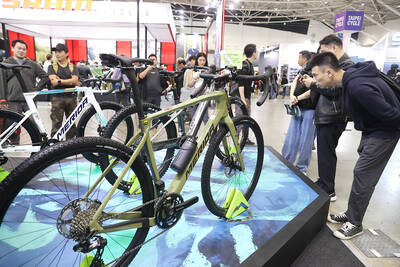Apple Inc’s iPad tablet computer cost as little as US$259.60 to build, according to an analysis by market research firm ISuppli Corp.
Materials for the iPad, which went on sale on Saturday, include a touch-screen display that costs US$95 and a US$26.80 processor designed by Apple and manufactured by Samsung Electronics Co, according to El Segundo, California-based ISuppli.
Analysis by ISuppli that components of the lowest-priced, 16-gigabyte iPad amounts to 52 percent of its retail price of US$499. That leaves the iPad on par with other Apple products, including the iPhone 3GS. A high-end 64-gigabyte version of the iPad, which retails for US$699, contains components that cost US$348.10, ISuppli said.
Much of the iPad’s component costs went toward making the device appealing to use, said ISuppli principal analyst Andrew Rassweiler, who supervised the “teardown” analysis of the product.
More than 40 percent of the iPad’s cost are devoted to powering its touch-screen display and other components of the computer’s user interface — “what you see with your eyes and what you feel with your fingers,” he said.
The distinctive aluminum casing on the back of the device contributed about US$10.50 to cost of materials.
Apple spokeswoman Natalie Harrison declined to comment.
Research firms conduct so-called teardown analysis of consumer electronics to determine component prices and makers and to estimate profit margins. The estimate doesn’t include costs for intangible items such as software development, advertising, patent licensing or shipping. In February, ISuppli had estimated that the least expensive iPad would carry a US$219.35 cost of materials.
Once it took one apart, ISuppli found more silicon chips than it had expected to power interactions with the iPad’s 9.7-inch screen.
“Because of the sheer scale of this device, we’re seeing more here than we expected,” Rassweiler said.
Apple uses three chips to control the iPad’s touch screen, for example.
Over time, Apple may have leeway to combine many of the iPad’s electronic components, or integrate them into the display, Rassweiler said.
“We’ll see a lot less silicon required to make them work,” he said.
The most expensive component in the iPad is its touch-sensitive, custom-manufactured screen. South Korea-based LG Display Co, Samsung and Japan’s Seiko Epson Corp make the LCD display, according to ISuppli.
Taiwan-based Wintek Corp (勝華科技) makes the glass overlay necessary to detect touches of users’ fingertips. The screen’s special design makes it about twice as expensive as those used in comparably sized netbook computers, according to Rassweiler.

A proposed 100 percent tariff on chip imports announced by US President Donald Trump could shift more of Taiwan’s semiconductor production overseas, a Taiwan Institute of Economic Research (TIER) researcher said yesterday. Trump’s tariff policy will accelerate the global semiconductor industry’s pace to establish roots in the US, leading to higher supply chain costs and ultimately raising prices of consumer electronics and creating uncertainty for future market demand, Arisa Liu (劉佩真) at the institute’s Taiwan Industry Economics Database said in a telephone interview. Trump’s move signals his intention to "restore the glory of the US semiconductor industry," Liu noted, saying that

On Ireland’s blustery western seaboard, researchers are gleefully flying giant kites — not for fun, but in the hope of generating renewable electricity and sparking a “revolution” in wind energy. “We use a kite to capture the wind and a generator at the bottom of it that captures the power,” said Padraic Doherty of Kitepower, the Dutch firm behind the venture. At its test site in operation since September 2023 near the small town of Bangor Erris, the team transports the vast 60-square-meter kite from a hangar across the lunar-like bogland to a generator. The kite is then attached by a

Foxconn Technology Co (鴻準精密), a metal casing supplier owned by Hon Hai Precision Industry Co (鴻海精密), yesterday announced plans to invest US$1 billion in the US over the next decade as part of its business transformation strategy. The Apple Inc supplier said in a statement that its board approved the investment on Thursday, as part of a transformation strategy focused on precision mold development, smart manufacturing, robotics and advanced automation. The strategy would have a strong emphasis on artificial intelligence (AI), the company added. The company said it aims to build a flexible, intelligent production ecosystem to boost competitiveness and sustainability. Foxconn

Leading Taiwanese bicycle brands Giant Manufacturing Co (巨大機械) and Merida Industry Co (美利達工業) on Sunday said that they have adopted measures to mitigate the impact of the tariff policies of US President Donald Trump’s administration. The US announced at the beginning of this month that it would impose a 20 percent tariff on imported goods made in Taiwan, effective on Thursday last week. The tariff would be added to other pre-existing most-favored-nation duties and industry-specific trade remedy levy, which would bring the overall tariff on Taiwan-made bicycles to between 25.5 percent and 31 percent. However, Giant did not seem too perturbed by the